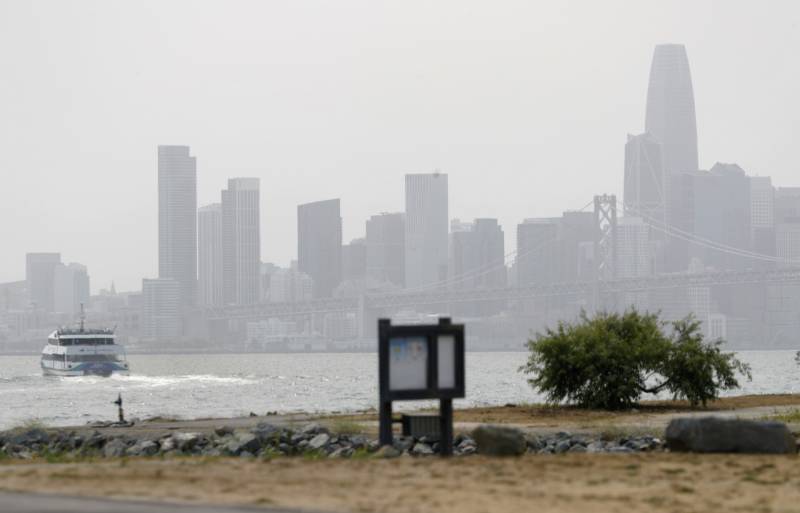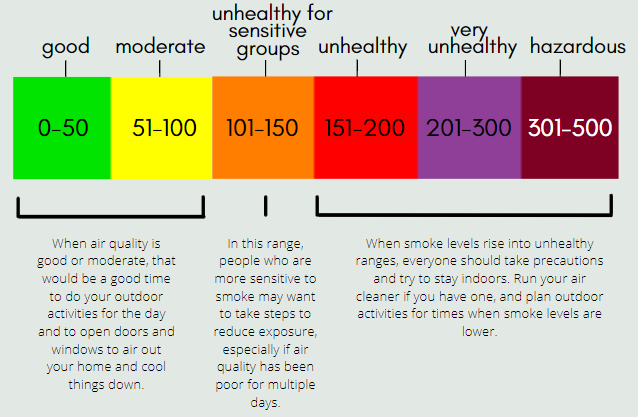The particles then travel deep into your lungs, and within a few days, the damage they cause can result in bronchitis or pneumonia.
Put simply: Even brief exposure to wildfire smoke can cause potentially serious health problems for everyone. People at higher risk include those with asthma, lung disease or heart disease, children and teens, older adults age 65+ and people who don’t live or work indoors. Pregnant people and their unborn infants are at particularly heightened risk from these particulates, which have been associated with low birth weight and premature birth for babies.
How to prepare for dangerous air quality
Since dangerously unhealthy air from wildfires can sweep in with little to no warning, it’s important to be ready beforehand. The Environmental Protection Agency, via its AirNow website, recommends taking certain steps to ensure you and your home are prepared.
Find – or make – a portable air purifier
The California Air Resources Board recommends portable mechanical air cleaners with a high-efficiency particulate air (HEPA) filter that collects very small particles and does not emit ozone or other harmful substances.
These air cleaners dramatically reduce indoor particle levels, in some cases by more than 90%. Here is a list of devices that are certified by and legal in California. If you can’t get a portable air purifier, the EPA has tips on how to make your own DIY air cleaner from a box fan and filter.
Make a ‘clean air room’ – and keep it cool
The EPA suggests designating a ‘clean air room’ in your home, one you can quickly seal off from any outside air and in which you can run a portable clean air filter. If excessive heat is a concern where you live, and you have a room with an air conditioner, this room might be best to select – just be sure to keep the fresh-air intake closed on any air conditioners to prevent outdoor smoke from getting inside. If it’s not feasible to designate a single clean air room, consider purchasing multiple portable air purifiers and ensure your home is properly sealed to outside air.
During heat waves, pay attention to temperature forecasts and know how to stay safe in the heat. Even if you don’t have air conditioning, keep doors and windows closed. This can reduce pollutant levels by 50%, according to the EPA. If you can’t stay cool at home or at a friend or relative’s house, the EPA suggests seeking relief at a clean air shelter or other large building with air conditioning and good filtration.
Stock up on filters for your air purifiers now
Whether for portable air purifiers or a central HVAC system (if you have one), it’s a good idea to stock up on replacement air filters before the need arises. If you wait until smoky air descends, the EPA warns, supplies may be out of stock or may not arrive in time to be helpful.
If you’re using a central HVAC system, make sure to purchase high-efficiency filters rated MERV-13 or higher.


